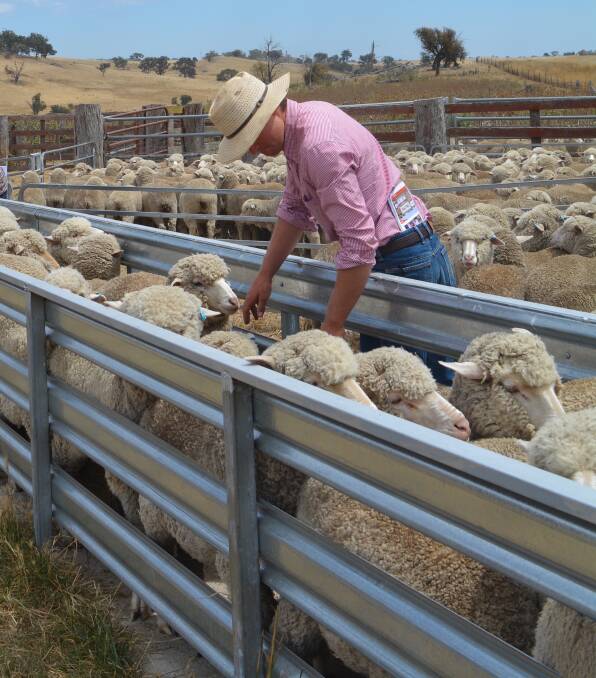
THE warm and wet conditions of spring provide the perfect environment for footrot to become evident and spread in sheep flocks.
Footrot is classified as inflammation of the interdigital skin and potential under-running of the hoof caused by the bacterium Dichelobacter nodosus.
While footrot is mostly seen in medium to high rainfall areas, it can occur throughout Australia and with the wet spring predicted, it is likely to become an issue for producers that are not usually impacted.
Controlling or eradicating the disease from the property can be costly but the long-term benefits of eradicating footrot far outweighs the cost.
The severity of the condition is determined by a combination of the strain of bacteria present in the foot, the environmental conditions, including rainfall and temperature, and the breed and genetics of the sheep.
Merino sheep are more susceptible to footrot than British breeds of sheep.
Department of Primary Industry and Regions' Chris Van-Dissel manages the footrot program in SA and highlights that footrot is not only an issue for those in traditionally medium to high rainfall areas.
"It is important for producers to know that sheep with apparently healthy-looking feet may still carry a virulent strain of footrot if the conditions at the time are not favourable to the bacteria's development," he said.
"With a wet spring predicted here in SA, producers need to be familiar with the signs of footrot so they can act quickly to minimise the spread in their flock."
RELATED READING: Minimise foot issues in sheep, webinar tips
RELATED READING: Opening up Australia comes with serious biosecurity risk
Lameness is often the first sign of footrot. It is important for producers to bring the mob in and investigate any signs of lameness promptly, particularly in flocks considered to be footrot-free.
Footrot is a notifiable disease so any suspicion of any form of footrot must be reported to PIRSA immediately.
Changes to the management of footrot in SA were announced in July 2018, with an increased emphasis on the laboratory test results for determining property status.
"As with any livestock disease, now it is the producer's responsibility to ensure that stock introduced are free from disease and appropriate post introduction quarantine periods are in place," Livestock SA project manager Pene Keynes said.
"Ensuring that you are doing all you can to minimise the introduction and spread of diseases, such as footrot, to your property through good on-farm biosecurity practices is paramount to protecting your animal health status and business."
If you see signs of footrot on your property and want support in diagnosis, contact your local animal health advisor at PIRSA, or Mr Van-Dissel on 08 8568 6415.
- The South Australian Livestock Biosecurity Extension project has been made possible by the SA government's Red Meat and Wool Growth Program and Animal Health Australia through the National Sheep Industry Biosecurity Strategy 2019-2024.
- Start the day with all the big news in agriculture. Sign up here to receive our daily Stock Journal newsletter.

